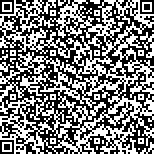下载中心
优秀审稿专家
优秀论文
相关链接
摘要

利用成熟发展的台风自身在风向上的涡旋型特征和风眼处风速相对周围较低的特征, 分别采用搜索QuikSCAT反演风向的涡旋中心, 风速或后向散射系数的台风中心区域在局部最小值点的方法定位获得了台风中心位置信息。在风矢量反演过程中采用QSCAT-1模型、借助Holland的台风模式, 修正了反演过程中的风向误差, 提高了台风中心定位的准确性。同时, 将该方法应用到对台风路径和强度监测中, 利用QuikSCAT对台风的连续观测资料分析得出台风强度和路径信息, 其中台风路径结果与美国国家飓风中心(NHC)通过最佳路径分析得到的台风路径结果基本一致, 但在台风强度结果上存在较大误差。为提高台风强度监测精度, 在反演过程中采用大风地球物理模型NN-T-GMF代替QSCAT-1模型, 使台风强度监测结果精度提高。结果表明, QuikSCAT可以有效监测海上台风路径和强度发展, 为进一步推断台风的强度发展和移动趋势提供帮助。
This paper developes a method to retrieve the typhoon intensity and location of the typhoon center from QuikSCAT. The typhoon intensity is derived by searching the maximum of the wind speed where the typhoon is present. The method to derive the location of typhoon center is based on the knowledge of typical wind field structure of mature typhoon, by searching the center of the helix structure of wind direction, local minimum of the wind speed around the typhoon eye, or the local minimum of the back scattering coefficient. To improve the accuracy of wind vector retrieval in typhoons, the Holland’s typhoon model is employed in the process of ambiguity removal to correct the wind direction error caused by the failure of Circular Median Filter (CMF) around the eye wall, while the Geophysical Model Function (GMF) NN-T-GMF is used as a replacement of the QSCAT-1 to reduce the bias induced by the inaccurate of the existing business operational GMF at high winds. Based on this method, the track and changes of typhoon intensity for typhoon Ioke and Kaemi are extracted from continuous QuikSCAT data. The results are comparable with the best-track analysis result form National Hurricane Center, indicating that QuikSCAT can be a powerful instrument to monitor and track typhoons.

